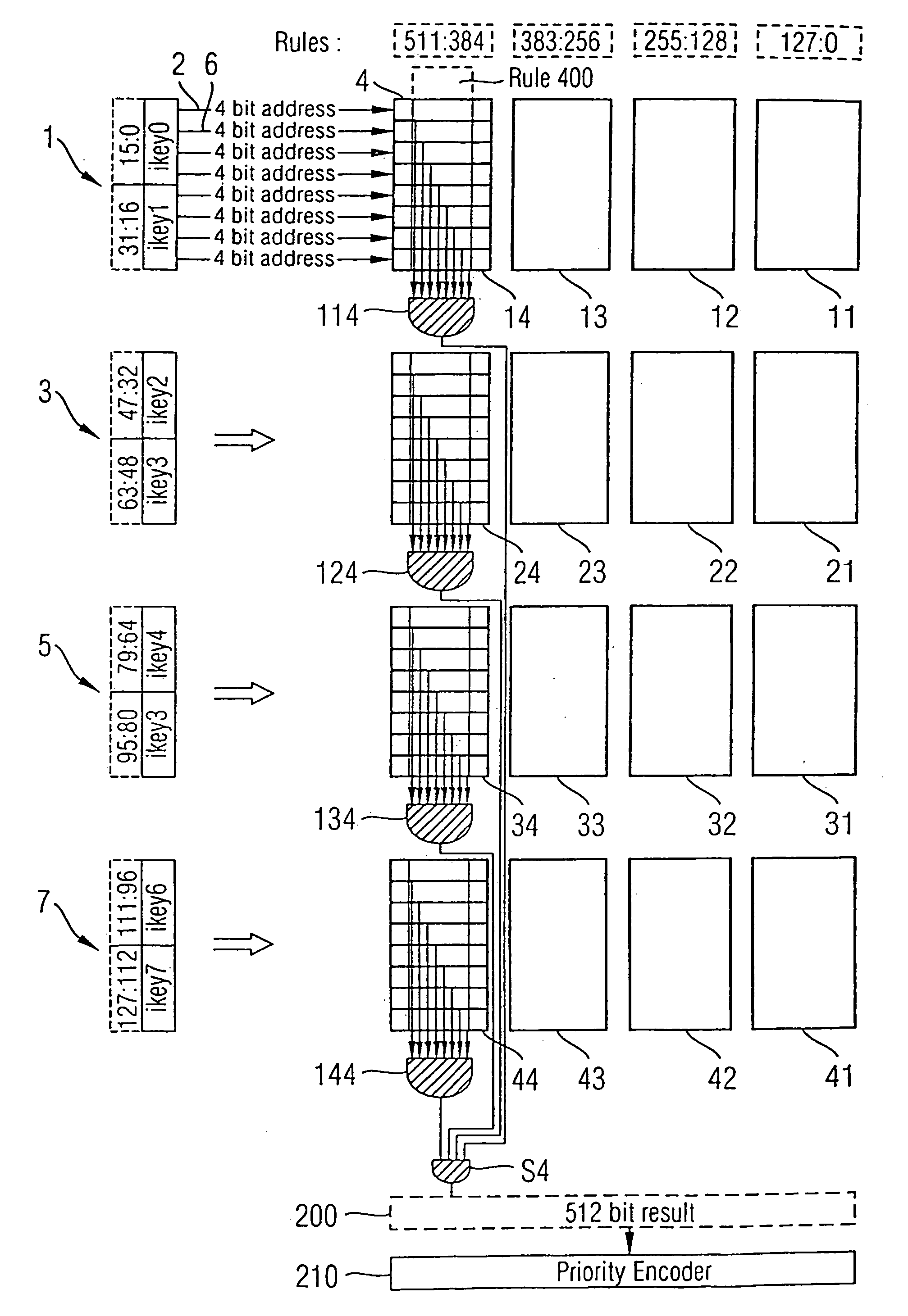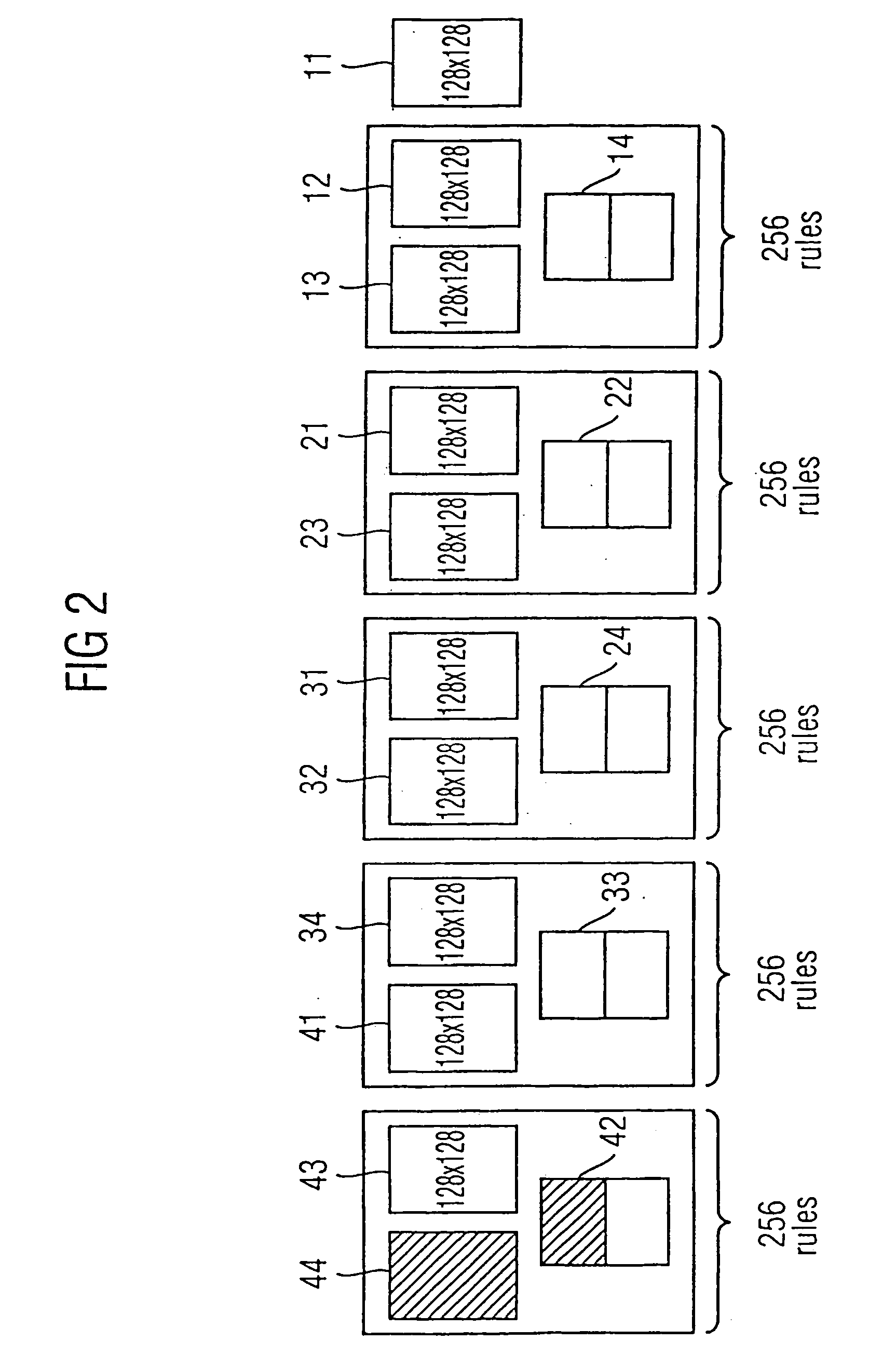Method and system for determining conformance of a data key with rules by means of memory lookups
- Summary
- Abstract
- Description
- Claims
- Application Information
AI Technical Summary
Benefits of technology
Problems solved by technology
Method used
Image
Examples
Embodiment Construction
[0026] In the first embodiment of the invention shown in FIG. 1, the number of bits N of the KEY is N=128 (i.e. 27). The number of rules is 512 (i.e. 29).
[0027] We consider the case of C=4, in which the KEY is divided into 128 / 4=32 chunks of 4 bits. Thus each chunk can take 24=16 possible values. The value of L is selected to be 8, so that each section is made up of 8 data chunks. The entire key is thus composed of N / CL=4 sections.
[0028] The embodiment includes 4 input interfaces 1, 3, 5, 7, which respectively receive (and store in N / 4 flip-flops each) one of the 4 sections of the data key: bits 0 to 31; bits 32 to 63; bits 64 to 95; and bits 96 to 127. For example, the first section of the data (bits 0 to 31) is made up of the following 8 chunks of the data key: bits 0 to 3, bits 4 to 7, . . . , bits 28 to 31.
[0029] Each of the input interfaces 1, 3, 5, 7 corresponds to four out of 16 RAM memories 11, 12, 13, 14, 21, 22, 23, 24, 31, 32, 33, 34, 41, 42, 43, 44. The input interfac...
PUM
 Login to View More
Login to View More Abstract
Description
Claims
Application Information
 Login to View More
Login to View More - R&D
- Intellectual Property
- Life Sciences
- Materials
- Tech Scout
- Unparalleled Data Quality
- Higher Quality Content
- 60% Fewer Hallucinations
Browse by: Latest US Patents, China's latest patents, Technical Efficacy Thesaurus, Application Domain, Technology Topic, Popular Technical Reports.
© 2025 PatSnap. All rights reserved.Legal|Privacy policy|Modern Slavery Act Transparency Statement|Sitemap|About US| Contact US: help@patsnap.com



